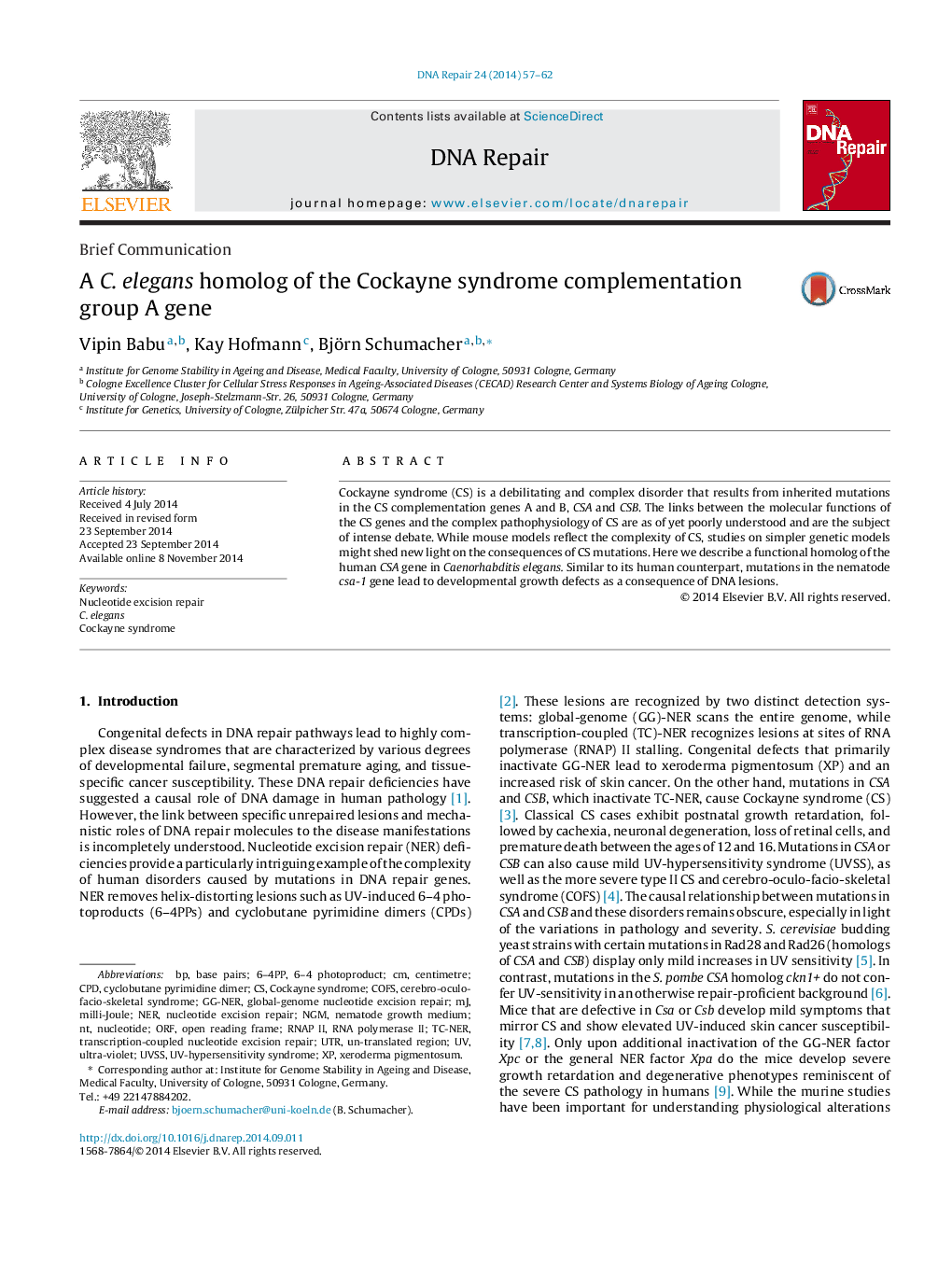| Article ID | Journal | Published Year | Pages | File Type |
|---|---|---|---|---|
| 8320705 | DNA Repair | 2014 | 6 Pages |
Abstract
Cockayne syndrome (CS) is a debilitating and complex disorder that results from inherited mutations in the CS complementation genes A and B, CSA and CSB. The links between the molecular functions of the CS genes and the complex pathophysiology of CS are as of yet poorly understood and are the subject of intense debate. While mouse models reflect the complexity of CS, studies on simpler genetic models might shed new light on the consequences of CS mutations. Here we describe a functional homolog of the human CSA gene in Caenorhabditis elegans. Similar to its human counterpart, mutations in the nematode csa-1 gene lead to developmental growth defects as a consequence of DNA lesions.
Keywords
RNAP IIORFTC-NERC. elegansGG-NERNGMRNA polymerase IICOFscpdNERxeroderma pigmentosumTranscription-coupled nucleotide excision repairnucleotide excision repairbase pairscyclobutane pyrimidine dimernematode growth mediumcentimetreCockayne syndromeultra-violetopen reading frameUTR یا untranslated regions Un-translated regionNucleotide
Related Topics
Life Sciences
Biochemistry, Genetics and Molecular Biology
Biochemistry
Authors
Vipin Babu, Kay Hofmann, Björn Schumacher,
